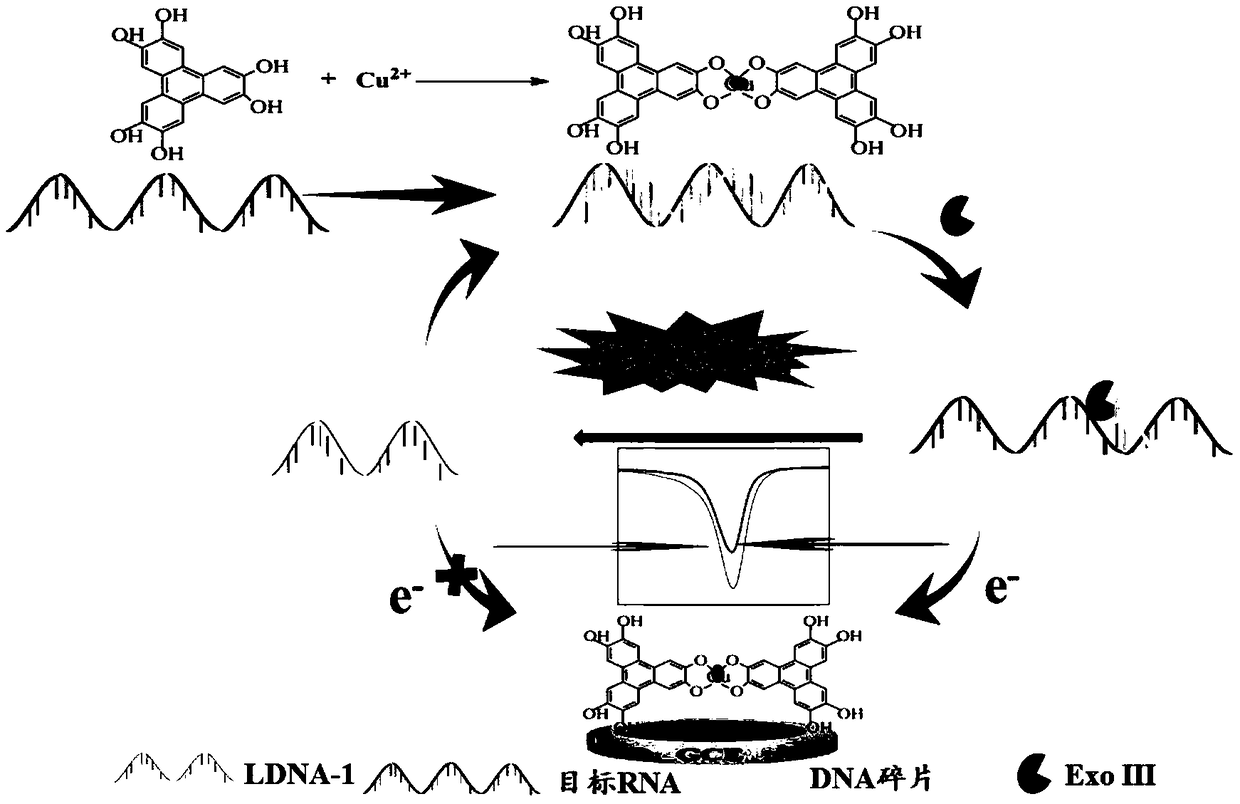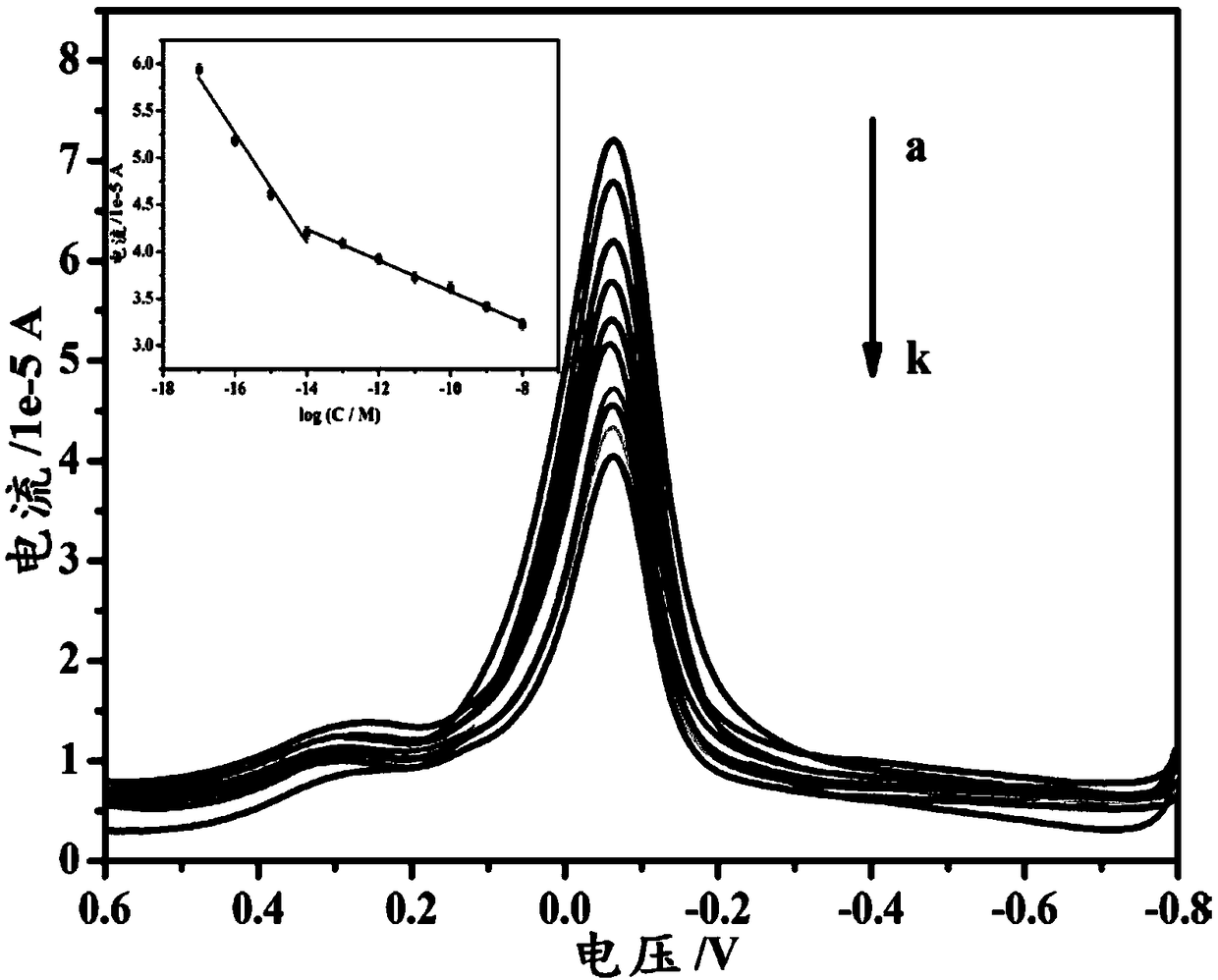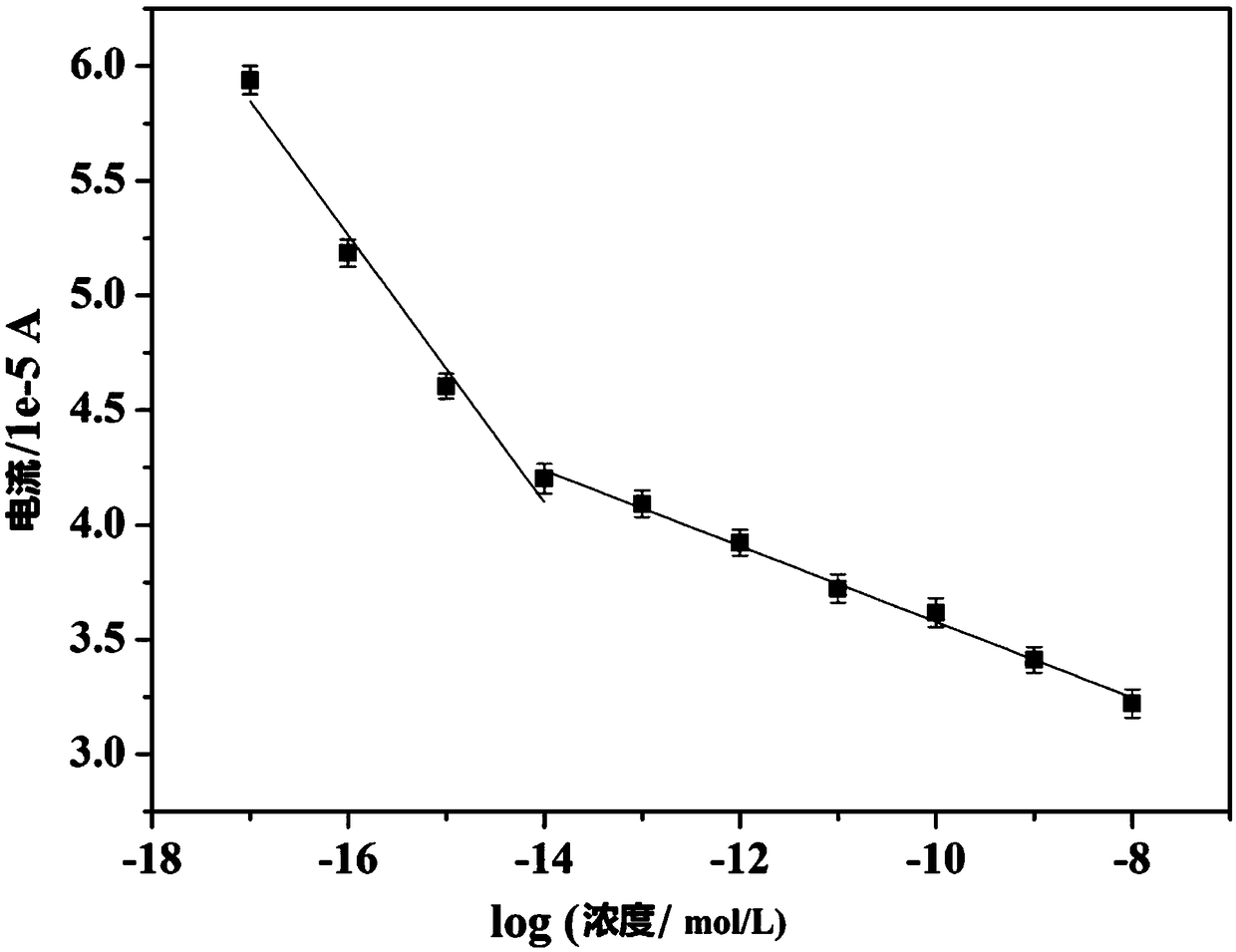Copper-hexahydroxy triphenylene-based miRNA-21 (micro ribonucleic acid-21) electrochemical sensor and detecting method thereof
A technology of hydroxytriphenylene and miRNA-21, which is applied in the field of electrochemical detection, can solve the problems that signal changes are greatly affected by the detection environment, the signal molecule labeling process is complicated, and the signal molecule and substrate electrode types are single.
- Summary
- Abstract
- Description
- Claims
- Application Information
AI Technical Summary
Problems solved by technology
Method used
Image
Examples
Embodiment 1
[0035] The detection method of the miRNA-21 electrochemical sensor based on copper-hexahydroxytriphenylene, the specific steps are as follows:
[0036] Step 1: Place the pretreated glassy carbon electrode on Cu(NO 3 ) 2 and N,N-methylpyrrolidone (NMP) mixed solution for i-t scanning electrodeposition of Cu simple film, Cu(NO 3 ) 2 The concentration of N,N-methylpyrrolidone (NMP) is 50mmol / L, and the concentration of N,N-methylpyrrolidone (NMP) is 50mmol / L; then the electrode is scanned by cyclic voltammetry in the mixture of CAT and NMP, the concentration of CAT is 50mmol / L, and the concentration of NMP The concentration is 50mmol / L, then washes with twice distilled water, obtains Cu-CAT modified sensing electrode, is recorded as: Cu-CAT / GCE;
[0037] Step 2: Mix the DNA complementary to miRNA-21 and miRNA-21. After mixing, the DNA concentration is 10nmol / L, and the miRNA-21 concentration is 10pmol / L. The mixture is incubated at 15-50°C for 60min to form DNA-RNA After comp...
Embodiment 2
[0048] Preparation of Modified Electrode 1: Put the Cu-CAT / GCE prepared in Step 1 of Example 1 in a solution of 10nmol / L single-stranded probe sequence (DNA: 5'-CAG TCT GAT AAG CTA-3') at 37°C After soaking at constant temperature for 50 minutes, rinse with double distilled water to obtain modified electrode 1;
[0049] Preparation of modified electrode 2: Mix DNA and miRNA-21 that are complementary to miRNA-21. After mixing, the DNA concentration is 10nmol / L, and the miRNA-21 concentration is 10pmol / L. React at a constant temperature of 37°C for 60min to form DNA-RNA To compound the chain, immerse the Cu-CAT / GCE prepared in step 1 in Example 1 into the DNA-RNA complex chain reaction solution at 37°C for 50 minutes, and then rinse with double distilled water to obtain the modified electrode 2;
[0050] The copper-hexahydroxytriphenylene-based miRNA-21 electrode obtained in step 2 of Example 1 was set as modified electrode 3;
[0051] Such as image 3 As shown, the differenti...
PUM
 Login to View More
Login to View More Abstract
Description
Claims
Application Information
 Login to View More
Login to View More - R&D
- Intellectual Property
- Life Sciences
- Materials
- Tech Scout
- Unparalleled Data Quality
- Higher Quality Content
- 60% Fewer Hallucinations
Browse by: Latest US Patents, China's latest patents, Technical Efficacy Thesaurus, Application Domain, Technology Topic, Popular Technical Reports.
© 2025 PatSnap. All rights reserved.Legal|Privacy policy|Modern Slavery Act Transparency Statement|Sitemap|About US| Contact US: help@patsnap.com



